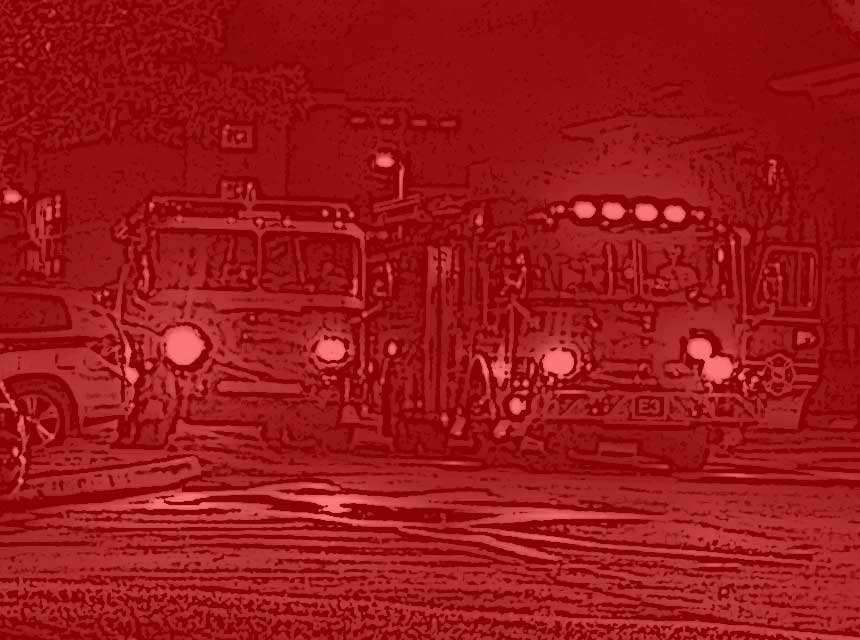
By Todd LeDuc
The United States fire service continues to be plagued by the fact that a majority of on-duty deaths are sudden cardiac deaths. A significant portion of these occur on the fireground during fire operations, despite the fact that such a small amount of time is spent fighting fire during a firefighter’s shift. This of course suggest the notion that the extreme rigors, heat, and stress of fireground operations must play a key role. Much research has been done in this area to better under that pathophysiology and manageable risk. A retrospective study published in 2018 in the Journal of the American Heart Association by Dr Denise Smith and colleagues found that on postmortem examination that 79.6 percent of sudden cardiac deaths in firefighters had underlying cardiac heart disease and cardiomegaly or left ventricular hypertrophy or an enlarged heart muscle. A number of cardiac postmortem reviews in that same study had a coronary artery with greater than 50 percent blockage, a thrombus or clot within the coronary artery itself, or evidence of a prior heart attack. A number of contributory factors come into play, including a sympathetic nervous system response from the “fight or flight” mechanism our body is wired to respond with as we engage in stressful and strenuous activities. This includes an increase in heart rate, respiration, blood pressure and oxygenation demand, heat stress, and dehydration. Additionally, blood and coagulatory changes play a role, with a decrease in circulating volume and increases in platelet numbers and function (clotting).
RELATED
FLAME Out: Cardiovascular Risk on the Fireground
Cardiovascular Training: Try It, You Might Like It
Surviving the Fire Service Cardiac Epidemic
Firefighters and Coronary Heart Disease: A Brief History on Research and Analysis
Further elevating risk are traditionally known modifiable risk factors. These include being overweight or obese, smoking, eating a diet high in fat and/or sugar, leading a sedentary lifestyle, high blood pressure, and high cholesterol (specifically, low HDL or “good” cholesterol and high LDL or “bad cholesterol.”) Other risk factors are not readily modifiable, such as being a male, older age, a family history of heart disease, being postmenoposal, and race. Firefighters have the risk that many face in the general U.S. population, but also must deal with specific occupational environment factors that further compound that risk if not properly managed. It is imperative that health practitioners seeing firefighters and first responder be knowledgeable in the understanding of unique occupational health risks faced when making treatment decisions. Work by Drs. Denise Smith, Stefanos Kales, and others shine light on the risk, for example, to firefighters being further elevated with unmanaged or undiagnosed hypertension. This places our risk in a higher category than other occupations that operate in less-extreme environments.
So where do we do from here? It will require a multifaceted approach if we want to make changes in sudden cardiovascular deaths in the fire service. First, according to a 2016 survey published by the International Association of Fire Chiefs, most members of the U.S. fire service are still not receiving an annual physical exam. Furthermore, of those that are, many are not receiving an occupational specific firefighter exam that includes a baseline set by National Fire Protection Association (NFPA) Standard 1582, Standard on Comprehensive Occupational Medical Program for Fire Departments. Additional work by Drs. Denise Smith and others with the FEMA-funded Better Heart research project have proposed that addition early detection cardiac imaging in firefighters is warranted and likely to identify early cardiac risk, which allows for early intervention and management. Adding enhanced imaging increases our changes of early detection. Having clinicians that are intimately familiar with this complex interplay and the evolving recommendations is an essential component to the solution.
Further, addressing hydration status and management of heat stress, including comprehensive medical monitoring and a robust on-scene rehab protocol, are also part of the solution. NFPA 1584, Standard on the Rehabilitation Process for Members During Emergency Operations and Training Exercises, is a good reference for review. We must also be aware of the extreme demands that are placed on firefighters physically with regard to all body systems and physiology. A key component to be addressed includes physical fitness, as outlined in NFPA 1583, Standard on Health-Related Fitness Programs for Fire Department Members. Additional research and development continues on physiological monitoring on the fireground and changes in personal protective gear and will guide additional recommendations. Understanding the complex interplay of factors involved with sudden firefighter cardiac death is essential to preventing it!

Todd J. LeDuc, MS, CFO, FIFirE, retired after nearly 30 years as assistant fire chief of Broward County, Florida, an internationally accredited career metro department. He served as chief strategy officer for Life Scan Wellness Centers, a national provider of comprehensive physicals and early detection exams. He has served as a member of the International Association of Fire Chief’s Safety, Health & Survival Section for over a decade and is currently secretary of the section. He is a peer reviewer for both professional credentialing and agency accreditation. He is editor of Surviving the Fire Service (Fire Engineering Books) and serves on numerous advisory boards and publications. He can be contacted at Todd. LeDuc@lifescanwellness.com
This commentary reflects the opinion of the author and does not necessarily reflect the opinions of Fire Engineering. It has not undergone Fire Engineering‘s peer-review process.

